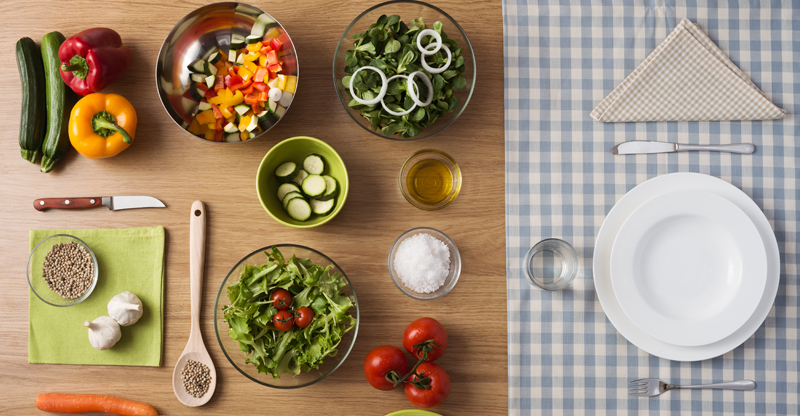Make your kitchen healthy to meet your goals!
You want to manage your weight. You want to eat better. You want to make better choices.
Great! When you decide to take responsibility for your own health, things start to change for you.
But sometimes, it’s harder to make changes than you expected. And it can be baffling as to why you are failing. You really meant it this time. But when you look back on your eating choices, they aren’t getting much better. What’s going on? Why are you having so much trouble?
In a previous post I talked about engineering your environment for success. Your surroundings have much to do with how well you do in achieving your goals. Some environments are conducive to success, while others are much more challenging. Changing your environment is a large part of successfully making behavior changes.
Let’s talk about having an unhealthy kitchen.
An unhealthy kitchen:
- Is disorganized. When you cannot make a meal without a serious hassle, you may skip that meal and order take-out or delivery instead. If making a meal will be too time consuming, you may opt for something that will quickly tide you over until the meal is done. That something may be from a bag or box, like cookies, candies, or chips.
- Is difficult to clean. If cleaning the kitchen requires major surgery, it will go uncleaned often.
- Has junk food out in the open. What is visible? Is it the cookies? Cupcakes? Candy? When you open your refrigerator, do you see pop? Beer?
- Has healthy options hidden. How easy is to get to the better options? Are they visible?
- Has huge kitchenware. How big are your dinner plates? Your bowls? Your glasses? That’s how big your meal will likely be.
You’re going to have to give your kitchen the “look’ test. It’s difficult to see the problems in your own kitchen. They may be “invisible” to you, so ask a trusted friend to help. When he or she looks at your kitchen, what does it look like the likely result would be of walking into it? Would a healthy meal be the result, or something else?
Here are some tips for having a healthy kitchen:
- Organize it. Clear out the clutter. Make the assembly of a meal easy.
- Make it easy to clean. Again, clear the clutter so cleaning isn’t an all-day process. Have quick clean-up options available. Have spray cleaners and disposable wipes out in the open and handy. They are great options for when you need to clean an area quickly.
- Put the junk food away and out of sight. The cookies, cakes, chips, and pop should be packed away. You aren’t forbidden to eat them, but you don’t want to eat them on auto-pilot either. Open your refrigerator. What do you see first? What is your eye drawn to? Organize it so that the less healthy options are on the bottom, in the back, or away in drawers. Alcohol should be hidden until you intend to have some. Open your cabinets and drawers. What’s up front?
- Have the healthy options out in the open. Whole fruits, whole vegetables, and whole grains should be easy to see and get to. Your counters and racks are great places for fruit bowls. If your crisper drawers are not easy to see through, consider putting the produce in clear, airtight containers in the main fridge. Have the canned veggies on the easiest shelves to see and get to. Have your whole grain options be the first things you see when you open a cabinet door.
- Use smaller plates, bowls, cups, and glasses. People tend to fill with food whatever container they are given. They also tend to eat all that is in front of them. Most people have a hard time deciding not eat it all. If your plate is large, you fill a large plate of food, and you eat it all. Get smaller plates, bowls, and cups. It’s really that simple. You’ll likely eat less. Also, make sure your cookware is small enough that you don’t make too much food for your needs. People have a hard time throwing food away, so if you make a meal in pots and pans made for an army, you’ll likely eat an army’s worth of food, all by yourself.
Your success in your goals, any goals at all, is heavily influenced by your commitment to taking responsibility for them. But it is not wise to try to rely on discipline and willpower alone. Your environment is powerful. Take responsibility for your environment. Change it to fit your new priorities, and make it easier on yourself. Meeting your goals usually involves a struggle, but you can do things to make the road easier to navigate.




